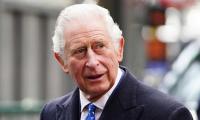What Modi decides, Modi does, say the Indian premier’s diehard supporters. That is not reassuring as his actions can be extremely dangerous, like his suicide bombing of the large denomination Indian currency notes during his first term as prime minister.
Modi has struck again, this time by unilaterally changing the status of Indian-occupied Jammu and Kashmir from accession to annexation. There is a huge difference though as increasing levels of cruelty in Kashmir can only turn the valley into a bigger tragedy with far-reaching consequences.
As pictures of marooned Kashmiris and their Indian captors are flashed across the media, reactions are gathering momentum, the latest being highly critical comments from China’s foreign minister, Wang Yi and the British Labour leader, Jeremy Corbyn. Far from internalizing the problem, Modi’s annexation of Jammu and Kashmir has drawn the world’s ire and warnings. This trend is also reflected within India as the initial shock gives way to introspection and criticism.
Having failed to tame the freedom movement in occupied Jammu and Kashmir after five years of iron-fisted rule, the Hindu nationalists have tempted fate by resorting to curfews denying the people basic freedoms like buying food and medicines.
The tragedy in Kashmir had begun to unfold soon after independence and was compounded with the Indian government forcing the Hindu ruler of this Muslim majority princely state to accede to India, with Nehru’s solemn pledges that the people of Jammu and Kashmir would decide their choice through a plebiscite. He did not really mean that and began looking for an opportunity to go back on his commitment because of his emotional attachment to the state.
Hailing from a Kashmiri Pandit family, Nehru too had a fatal attraction for the Valley of Kashmir and its pristine Dal Lake. He was prepared to go to any length to keep the state within India, and found a pretext of sorts to fulfill his wish. As soon as Pakistan signed a defence pact with the US, Nehru claimed that the situation (in the Subcontinent) had changed and it was no longer possible to hold a referendum in Jammu and Kashmir. Period.
Nehru fulfilled his designs with the cooperation of Shaikh Abdullah, the secular-minded prime minister of Kashmir and leader of the National Conference party. Abdullah would eventually suffer the humiliation of India’s total grip over the territory, being sent to prison and dying a broken man in the end. He was replaced by Delhi’s new protégé, Bakhshi Ghulam Muhammad. Over time, the Abdullah family returned to power, with Shaikh Abdullah's son Farooq and grandson Omar becoming chief ministers – but always under the tutelage of the central government.
In order to weaken the Abdullah family’s hold over the Valley, India helped Mufti Saeed set up the rival People’s Democratic Party. Like the Abdullah family, Mufti would also be succeeded by a family member, in this case his daughter, Mehbooba Mufti. Nothing changed on the ground as India kept increasing its military hold over the occupied territory to quell the freedom movement steered by the All Parties Hurriyet Conference – the APHC.
The idyllic land of Kashmir was termed as the world’s most beautiful prison by the European parliament’s observer mission as it saw mounting levels of repression and torture with ever-increasing presence of security forces across the valley. India began taking shelter behind accusations of terror networks run from Pakistan.
Things changed drastically with the BJP coming to power after the 2014 election. The Modi government turned Kashmir into a test case for its long-cherished aim of whittling secular values and establishing a Hindu order, first by forcing its way in the Mehbooba-led coalition in Jammu and Kashmir, and later by pulling the rug from under her feet after she refused to bow to Delhi’s diktat to do away with Jammu and Kashmir’s special status under Articles 370 and 35-A of India’s constitution. As a first step to move towards annexation, the state was placed under governor’s rule.
The BJP’s mounting repression has produced a younger generation of Kashmiri Muslims more determined than ever to resist India’s efforts to subjugate the people of Occupied Kashmir.
Fast forward to July 22, 2019 when PM Imran Khan was pleasantly surprised by US President Trump’s disclosure of Narendra Modi having broached with him a possible mediatory role in Kashmir. Modi kept silent but directed his spokesmen to deny that he had suggested to Donald Trump to mediate in the Jammu and Kashmir dispute.
From the beginning of August, India began sending reinforcements to the valley, and resorted to curfew – forcing the residents to stay indoors. A two-minute video filmed on the deserted streets of Srinagar cautioned that something ominous was in the offing, hinting that Jammu and Kashmir could be declared a union territory, to be administered from Delhi. August 5 turned out to be the day of infamy when Amit Shah, Modi’s partner in crimes against the Muslims of the Gujarat state, delivered the shocking declaration that India was unilaterally withdrawing the special status of Jammu and Kashmir under Articles 370 and 35-A of the Indian constitution and turning the state into two union territories.
Successive Indian governments have kept changing the goalposts in efforts to resolve the dispute, leaving the terms of accession in tatters – till Modi & Co decided to run away with the goalpost. The Kashmiri people as well as the other party in the dispute – Pakistan – and the international community are ostensibly presented with a fait accompli. Modi and Shah, their supporters and those celebrating the brutal lock-down of the valley will live to regret their decision because this situation will be more perilous for the occupying power than all its perfidious acts against the Kashmiri people for 72 years.
Email: saeed.saeedk@gmail.com
Invention of Bakelite by Belgian chemist Leo Baekeland in 1907 marked beginning of large-scale plastic production
It was found that at least 60% of answers given by AI were inaccurate or blatantly incorrect
Apple and other manufacturing giants face skyrocketing costs as their China-based supply chains get taxed into oblivion
Pakistani mills buy American cotton, turn it into products, and sell those goods back to American consumers
Senior Pakistani delegation is scheduled to visit Washington for trade and tariff negotiations
Sialkot’s products meet stringent international quality standards, ensuring reliability and safety in medical...







